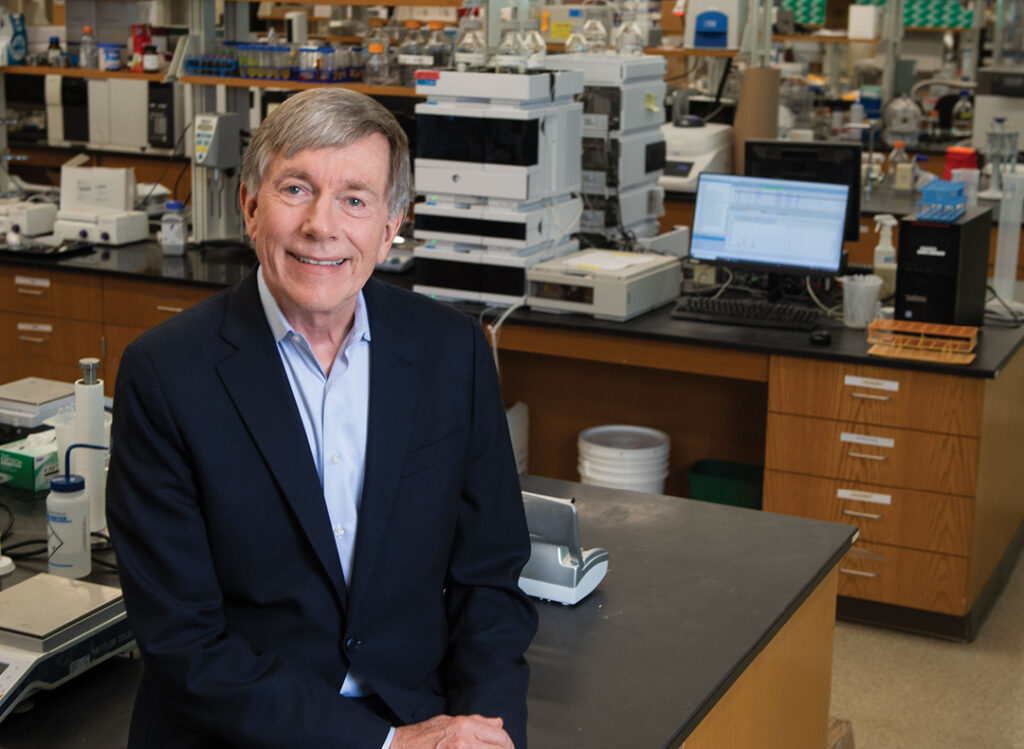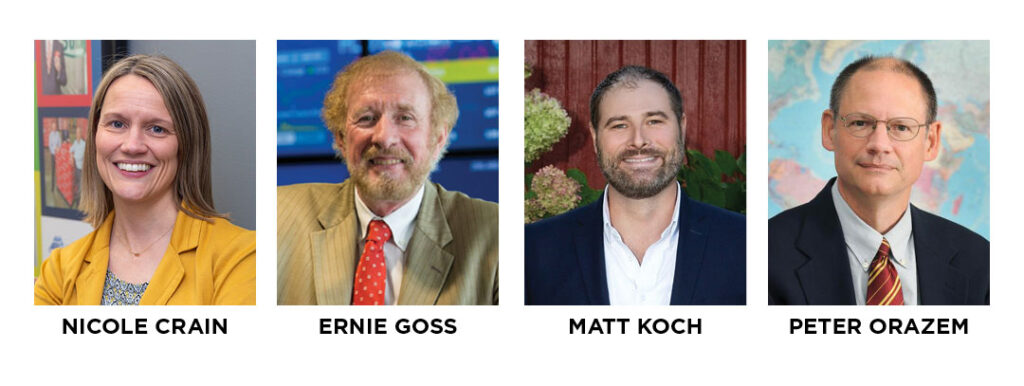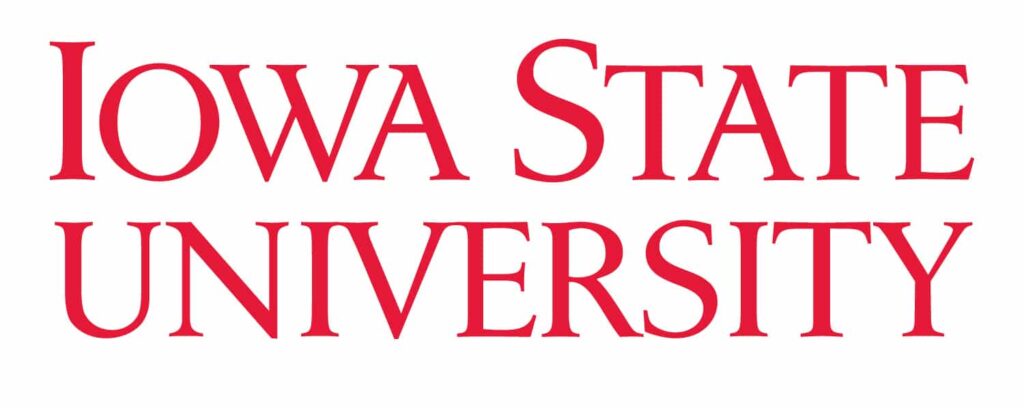Three Iowa colleges highlight research in housing, genetics, chemistry
From housing markets to genetic inheritance to molecular delivery vehicles: Get to know three research projects led by Iowa professors that could play a big role in our future world.

Researchers study effects of landlord decisions during pandemic
Iowa State University
Researchers at the ISU College of Design and College of Liberal Arts and Sciences received a $60,000 National Science Foundation rapid response grant to study how landlord decision-making influenced regional housing markets during the COVID-19 pandemic.
RESEARCHERS:
Jane Rongerude, associate professor of community and regional planning; Biswa Das, associate professor of community and regional planning, specialist with ISU Extension and Outreach; Daniel Kuhlmann, assistant professor of community and regional planning; Lily Wang, professor of statistics; Lin Quan, Ph.D. statistics student.
HOW IT WORKED
Researchers sent surveys to property owners in four midsized U.S. cities that require landlords to register their rental properties: Minneapolis, Cleveland, Tampa, Fla., and Des Moines. Researchers then interviewed select willing landlords and property managers from the initial survey, as well as local planners, public officials, landlord association representatives and other policy stakeholders. The interviews recorded their understanding of rental housing problems in the city, and local landlord responses to those problems.
Researchers collected 2,091 responses to the survey; 332 responders were Des Moines landlords. The study is still in the early stages of analysis as researchers continue collecting interviews with landlords; initial results are available at covidrental.design.iastate.edu/survey.html.
INITIAL TAKEAWAYS
Since the start of the COVID-19 pandemic:
51% of landlords said tenants missed one or more rent payments.
43% of landlords said they worked out a payment plan for tenants.
39% of landlords said they had worse cash flow; 35% said they saw a decline in rental income.
28% of landlords saw an increase in operating expenses.
24% of landlords had increased difficulty leasing vacant units.
23% of landlords said some of their tenants prematurely vacated units.
WHY IT MATTERS
Landlords and rental properties are key players for communities building affordable housing, but ISU researchers have found no foundational research nationally that attempts to standardize and understand the differences between types of landlords and the stresses they face.
“We have this idea that landlords are wealthy, and we’re uncomfortable with the face that they’re making a living off of a basic need, which is shelter. But this is the system that we have, and if we want housing stability which benefits all of us, then we need to know how to reach them, we need to understand how they make decisions, and we need to really find out what their priorities are,” Rongerude said.
“We have bodies that need a place to live. This is essential,” she added.
FUTURE FOLLOW-UP
As the team continues collecting new interviews from landlords, they will be tracking decisions such as evictions, offers allowing tenants to leave their leases early, market exits and other choices.
“Every market is different, and our housing markets and policies are very local. We’re going to have a mix of cities, some of which have rent control and some that don’t, to try to understand the decisions that landlords make,” Rongerude said.
Des Moines University
Researchers led by Des Moines University professor Jun Dai received a three-year, $488,819 grant by the National Institutes of Health to explore possible links between a specific epigenetic modification of DNA and the occurrence of type 2 diabetes and obesity, two global public health challenges. Epigenetics is the study of the roles behavior and environment play in shaping how individual DNA is affected; although epigenetic traits are generally reversible, some traits may become inheritable, Dai said.
RESEARCHERS
Jun Dai, associate professor of public health; Martin Schmidt, professor of biochemistry and nutrition; Chunfa Jie, statistician in biochemistry and nutrition; collaborators at Indiana University, Pennsylvania State University and the research institute SRI International, based in Menlo Park, Calif.
HOW IT WORKS
Dai and her colleagues will use the National Heart, Lung and Blood Institute Twin Study, which began in 1969 as a study on the cardiovascular disease risk with emphasis on genetic and environmental factors in the U.S. Dai and her team will examine data from sets of adult male identical twins. The study comprehensively documented each adult’s physical health status, lifestyle and other environmental factors influencing their health.
Within the data, the team is examining the role of a specific epigenetic modification in the DNA, hydroxymethylated cytosine (5hmC). The team hopes to determine how 5hmC relates to type 2 diabetes and obesity, and whether its role is influenced by environmental factors.
WHY IT MATTERS
Epigenetics play a key role in understanding how environmental factors influence the genetics of the next generation, Dai said. Once public health officials understand the role behavioral factors such as smoking play in genetics, that will shape how doctors address the behavior itself in patients.
“If we understand how other environmental factors that can be modified could explain type 2 diabetes and obesity, I think people may be more motivated to change their behaviors. Or people may be more motivated to change environmental factors, so we can have a healthier population,” Dai said. “We have multiple ways to prevent and treat disease, like stopping smoking, increasing physical activity. But we still cannot 100% eliminate disease. We always need to find a new way to prevent disease.
“We are training the next generation of public health practitioners,” Dai added. “It will be important for our future public health professionals to be aware, at least, of the concept of epigenetics so they will be prepared for future challenges, like COVID-19.”
FOLLOW-UP
The study’s launch was initially delayed by the COVID-19 pandemic’s onset in 2020, but researchers began March 1, 2021. The grant will support Dai’s study for three years.
Pella laboratory leads development in new ‘cambiarene’ molecules
Central College
Jay Wackerly, associate professor of chemistry, is leading the research of a new class of supramolecular macrocyclic molecules called “cambiarenes,” invented by Wackerly’s laboratory. Macrocyclic molecules are large molecules that have a cavity, which can pick up and hold smaller molecules. The first cambiarene was announced by Wackerly in the academic journal “Chemistry — A European Journal” in 2020; Wackerly began research on the molecules in 2012.
RESEARCHERS
Wackerly leads laboratory research with Central College undergraduate students, is assisted in some analysis by colleagues at the University of Iowa, and is developing a new research partnership with researchers at the National University of Ireland, Galway.
HOW IT WORKS
Macrocyclic molecules have been used industrially for decades, Wackerly said — the consumer brand Febreze uses the molecule as a carrying agent in its product formula. Wackerly is researching how cambiarenes molecules undergo physical changes in response to changes in stimuli.
Cambiarenes that change on impact from chemical or electronic stimuli could be used to capture, transport and release smaller molecules at designated points. That process could potentially play a major role in future medical therapies and environmental cleanup initiatives.
INITIAL TAKEAWAYS
Much of the international molecular research available focuses on slightly modified molecular structures that have existed for decades, Wackerly said. Along with undergraduate students at Central College, Wackerly is designing brand-new molecules from the ground up.
“It’s a fundamentally new piece, but that first molecule published is made from two commercially available starting materials,” he said. “I think it allows us to be more creative and possibly innovate 20 to 30 years down the road — not only in ways we haven’t thought of yet, but in ways that solve some problems we don’t even know are problems yet.”
WHY IT MATTERS
In the long term, cambiarenes could be effective transportation molecules in industries as varied as targeted drug delivery therapies, agricultural chemistry or carbon dioxide capture and recycling from industrial smokestacks.
“We know phosphate runoff is an issue, especially in Iowa farm fields. If there’s a way we could recapture that phosphate amount and recycle it, then it could be reused in some ways,” Wackerly said.
Understanding how cambiarene molecules can be recycled will play a major role in designing the molecules as capture-and-release vehicles, he added.
“Some of the materials being developed for carbon capture basically get thrown away, because they don’t do a release. Ours will have a release mechanism so it can be reused, so you’re not throwing away that material that you developed. You could actually release it and reuse it,” Wackerly said.
FOLLOW-UP
The National Science Foundation is considering a proposal by Wackerly’s lab to study how expanding the shape of a cambiarene’s cavity would affect its ability to capture, carry and dispel smaller molecules. Wackerly is also interested in identifying techniques to make cambiarene molecules water-soluble, which would improve delivery and expand the potential use applications for cambiarenes.










